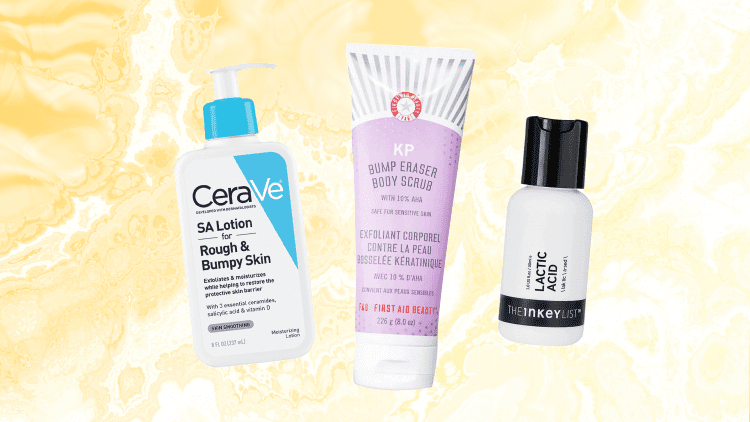The quest for clear skin doesn’t stop at the neck. With breakouts possible virtually anywhere you have hair follicles, we’re always on the lookout for the best treatments to banish bumps anywhere on the body. But what if the bumps aren’t your typical acne comedones or bouts of eczema? If you’re experiencing areas of little, rough bumps that look more like red goosebumps than zits, you may be dealing with keratosis pilaris, or KP.
“Keratosis pilaris is a buildup of keratin — a hair protein — in the pores that clogs up and blocks the opening of growing hair follicles,” New York City board-certified dermatologist Doris Day, MD, previously told Allure. “As a result, small bumps form over where the hair should be.” Birmingham-based board-certified dermatologist Corey L. Hartman, MD, notes that “KP differs from dark pores (or “strawberry legs”), which represent shaved dark hairs and keratin that turns dark when exposed to oxygen.” So, if you run your hands over your skin and don’t feel physical bumps, it’s most likely not KP.
To add on, Texas-based board-certified dermatologist Heidi Prather, MD, of Westlake Dermatology, says KP occurs due to a dysfunction in the hair follicle. Symptoms of keratosis pilaris include “small bumps resembling ‘chicken skin’ that can occur on arms, legs, or even your face.” And just as KP can look similar to acne, the approach to reducing it is similar to that of acne. “Treatment of KP responds best to a combination of exfoliation and hydration,” Dr. Prather explains.
Specifically, New Jersey-based board-certified dermatologist Shari Sperling, MD, says alpha and beta hydroxy acids (AHAs and BHAs) are the way to go. “When treating keratosis pilaris, it is important to look for products with lactic, salicylic, or glycolic acid to help smooth skin,” she says. New York City-based board-certified dermatologist David Kim, MD, adds that KP tends to flare up during the winter months, so having a potent moisturizer to combat dryness on hand is extra key.
However, Dr. Kim warns that “KP is very difficult to treat and persists throughout adulthood.” While he does say the aforementioned acids — in addition to ammonium lactate, urea, and vitamin A derivatives — can in fact help reduce bumpiness, they will not cure KP.
Read More
Body & Mind Guide
Symptoms, treatment options, and personal experiences for various physical, mental, and health conditions and concerns.
Arrow
Keep in mind that products and treatments may work to varying degrees of success for different people. “There are many types of KP that may require a customized approach based on your presentation and symptoms,” Dr. Prather says. “See your board-certified dermatologist for evaluation, diagnosis, and a customized treatment plan, including topical therapies and possible in-office laser treatments that can help improve the discoloration and rough texture from KP.”
But if you’d like to give some at-home options a try, these are 17 products dermatologists recommend picking up to promote cell turnover and help relieve the rough, red bumpiness known as keratosis pilaris.
Ready to feel more confident when reading your beauty products’ ingredient labels? Enter, the Allure Ingredient Index. In this comprehensive guide, you’ll find everything you need to know about the most in-demand (and under-the-radar) ingredients in your favorite skin-care products.
Source by www.allure.com


